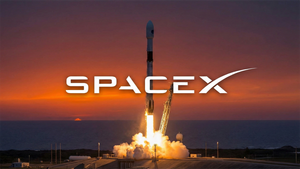
Ethereum, the undisputed foundation of the decentralized internet, is currently navigating a transformative period marked by groundbreaking technical upgrades, surging institutional interest, and an expanding ecosystem. The recently deployed Dencun upgrade has dramatically enhanced the network's scalability, particularly for Layer-2 solutions, while the burgeoning inflows into Spot Ethereum Exchange-Traded Funds (ETFs) are providing unprecedented institutional validation and capital. This confluence of events is setting the stage for what many experts believe will be a significant price surge for ETH, with ambitious targets of $10,000 and beyond firmly in sight for the coming years.
The current landscape for Ethereum is one of cautious optimism mixed with tangible growth. The network is solidifying its position as the premier platform for decentralized finance (DeFi) and Web3 innovation, even as it grapples with market volatility and an ever-evolving regulatory environment. The strategic enhancements and growing mainstream acceptance are not merely incremental improvements; they represent a fundamental re-rating of Ethereum's potential, positioning it for a new era of adoption and value accrual.
Dencun's Genesis: A New Era of Scalability Unlocks Ethereum's Potential
The Ethereum Dencun upgrade, officially deployed on March 13, 2024, stands as a monumental achievement in the network's ongoing evolution towards a highly scalable and cost-efficient blockchain. This upgrade, a portmanteau of the "Cancun" (execution layer) and "Deneb" (consensus layer) components, fundamentally alters how Layer-2 (L2) rollups interact with the mainnet, ushering in a new era of significantly cheaper and faster transactions.
At the heart of Dencun's transformative power is Ethereum Improvement Proposal (EIP)-4844, commonly known as "proto-danksharding." This innovative feature introduces "blobs" (Binary Large Objects), a novel and far more efficient way for L2 rollups to publish transaction data to the Ethereum mainnet. Prior to Dencun, L2s relied on expensive "calldata" for permanent data storage, which accounted for a substantial portion (73% to 90%) of their transaction fees. Blobs, however, are temporary storage containers that "ride alongside blocks" and are pruned from the blockchain after approximately 18 days, drastically reducing the long-term storage burden and associated costs. Critically, blobs operate within their own separate fee market, insulating L2 transaction data costs from the often-volatile gas fees of Layer 1. This separation ensures that even during periods of high network congestion, L2 transactions remain affordable. The Dencun upgrade represents a crucial stepping stone towards "full danksharding," a more comprehensive sharding solution that promises to further amplify Ethereum's processing capabilities.
The immediate aftermath of Dencun's deployment saw a dramatic reduction in Layer-2 transaction costs. Estimates suggest that the price of swapping tokens on L2 decentralized exchanges could drop by as much as 80%, with some L2 teams anticipating reductions of up to 90% or even 98%. Post-upgrade, average transaction fees on leading L2s like Base (COIN), OP Mainnet (OP), and Starknet plummeted by 98%, while Arbitrum (ARB) and ZkSync Era saw reductions of 96% and 86% respectively. This reduction in sequencer costs, borne by the entities uploading L2 data to Layer 1, fosters greater competition among L2s, ultimately benefiting end-users with lower fees. While proto-danksharding doesn't directly increase Layer 1 transaction capacity, it significantly enhances the scalability of L2s, thus improving the overall throughput of the Ethereum ecosystem. Daily transaction count volume on leading L2s supporting EIP-4844 more than doubled, with combined daily L2 throughput reaching approximately 136.5 transactions per second (TPS) shortly after Dencun's execution.
Key players involved in the Dencun upgrade included the Ethereum Foundation, numerous core developers like Vitalik Buterin, and various client teams such as Geth, Erigon, Lighthouse, and Prysm, all collaborating to ensure a smooth and successful deployment. The initial market reaction was overwhelmingly positive, with increased activity on L2s and a renewed sense of optimism regarding Ethereum's long-term scalability roadmap. This upgrade positions Ethereum not just as a secure base layer, but as a robust and accessible platform capable of supporting mass adoption.
Institutional Floodgates: Spot ETFs and the New Wave of Ethereum Investors
The launch and subsequent performance of Spot Ethereum Exchange-Traded Funds (ETFs) have opened unprecedented channels for institutional capital to flow into the Ethereum ecosystem, drawing significant parallels, and some distinctions, from the earlier success of Spot Bitcoin ETFs. While the immediate price surge following the Ethereum ETF approval in May 2024 (which saw ETH jump from below $3,000 to between $3,800 and $3,900) was notable, the sustained inflows since trading commenced on July 23, 2024, signal a deeper, more enduring institutional embrace.
Spot Ethereum ETFs, offered by financial giants like BlackRock (NYSE: BLK) with its ETHA fund, Fidelity (NYSE: FNF), and VanEck (NASDAQ: VANE), provide a regulated and accessible gateway for institutional investors to gain exposure to ETH without the complexities of direct cryptocurrency management. As of July 2025, the total assets under management (AUM) across all spot ETH ETFs had already exceeded $12.1 billion, with BlackRock's ETHA alone commanding approximately $5.6 billion. August 2025 proved to be a particularly strong month, with spot ETH ETFs attracting over $4 billion in net inflows, notably surpassing Bitcoin's ETF demand during the same period. Furthermore, Q2 2025 saw Ethereum ETFs record an impressive $9.4 billion in net inflows, overshadowing Bitcoin's $552 million in inflows for that quarter.
These inflows are not merely speculative; they represent a strategic allocation by institutional players who view Ethereum as a "growth asset" and critical digital infrastructure. The SEC's authorization of "in-kind redemptions," allowing institutions to directly exchange large baskets of ETH for ETF shares, minimizes transaction costs and price slippage, making these ETFs a scalable solution for substantial capital deployment. The prospect of staking rewards, offering attractive yields of 3-6%, further incentivizes institutional holding, potentially locking up a significant portion of ETH's circulating supply. By August 2025, an estimated 60% of Ethereum's supply was reportedly held in ETF portfolios.
While the inflows have shown some volatility, with significant outflows observed in early September 2025, analysts anticipate a rebound, especially with the potential approval of staking within ETFs by Q4 2025. This institutional validation has played a significant role in ETH's price surge, which saw a 75% increase year-to-date from July 2024 to August 2025, pushing ETH towards the $4,600-$5,000 range. This new era of institutional adoption is expected to anchor Ethereum's price above $5,000 into Q4 2025 and beyond.
Winners and Losers in the Scalability Race and Institutional Shift
The twin forces of the Dencun upgrade and Spot Ethereum ETF inflows are creating distinct winners and losers across the cryptocurrency landscape, fundamentally reshaping market dynamics and investor strategies.
The Clear Winners:
The most immediate beneficiaries are the Layer-2 scaling solutions built on Ethereum. Companies operating these networks, such as Optimism (OP Mainnet), Arbitrum (ARB), Coinbase (NASDAQ: COIN) with its Base network, and StarkWare (Starknet), are seeing dramatically reduced operational costs and increased user adoption. The Dencun upgrade's "proto-danksharding" has directly lowered the cost for these L2s to post transaction data to the Ethereum mainnet, making their services significantly cheaper and more attractive to end-users. This cost reduction allows them to offer lower transaction fees, driving higher transaction volumes and total value locked (TVL) within their ecosystems. For instance, Coinbase's Base has emerged as a particularly strong performer, achieving 9.4 million daily transactions and $12.45 billion in TVL, attracting millions of new users. These platforms are now better positioned to compete for users and developers, accelerating their growth and strengthening their long-term viability.
Ethereum (ETH) itself is a primary winner. The Dencun upgrade enhances its utility by making its ecosystem more scalable and affordable, while the ETFs provide a massive new conduit for capital. The increased institutional demand from the likes of BlackRock (NYSE: BLK) and Fidelity (NYSE: FNF) through their ETF offerings is driving price appreciation and bolstering Ethereum's legitimacy as a mainstream financial asset. This makes ETH more attractive to a broader range of investors, from retail to large institutions. The Decentralized Finance (DeFi) sector operating on Ethereum also benefits immensely. Protocols like Aave (AAVE) and Lido Finance (LDO), which are major contributors to Ethereum's over $91 billion TVL, will see increased activity and liquidity as L2 transaction costs decrease, making DeFi more accessible and attractive for users.
The Potential Losers/Those Facing New Challenges:
While the overall crypto market benefits from Ethereum's strength, some entities may face new challenges. Alternative Layer-1 blockchains often touted as "Ethereum killers," such as Solana (SOL), Avalanche (AVAX), and BNB Chain (BNB), might find it harder to differentiate themselves purely on the basis of speed and low fees. As Ethereum's L2s become more competitive on these fronts, the unique selling proposition of these alternative L1s could diminish, forcing them to innovate further or risk losing market share in the long run.
Furthermore, traditional financial institutions that have been slow to embrace digital assets could be at a disadvantage. As more capital flows into regulated crypto products like Spot Ethereum ETFs, those without exposure or innovative offerings in this space might miss out on significant growth opportunities. Centralized exchanges that primarily rely on high trading fees might also face pressure as more users migrate to cheaper L2s for daily transactions, potentially impacting their revenue models if they don't adapt their offerings to integrate seamlessly with the L2 ecosystem. The increased institutionalization through ETFs could also lead to a concentration of power among a few large asset managers, which some in the decentralized community might view as a philosophical loss for the ethos of decentralization.
Ethereum's Expanding Orbit: Industry Impact and Broader Implications
The recent advancements surrounding Ethereum, particularly the Dencun upgrade and the influx of Spot Ethereum ETF capital, are not isolated events; they are deeply intertwined with broader industry trends and carry significant ripple effects across the entire digital asset landscape. These developments solidify Ethereum's position as a foundational layer of the emerging Web3 economy and have far-reaching implications for competitors, partners, and regulatory bodies.
This event perfectly aligns with the overarching industry trend towards scalability and accessibility in blockchain technology. For years, Ethereum's success has been hampered by network congestion and prohibitively high gas fees, pushing users and developers towards alternative Layer-1 chains. Dencun, through proto-danksharding, directly addresses this by making Layer-2 solutions dramatically more efficient and cost-effective. This move effectively integrates the concept of modular blockchain design into Ethereum's core strategy, signaling a future where the mainnet serves as a secure settlement layer while most user activity occurs on highly optimized L2s. This trend emphasizes performance and user experience, which are crucial for attracting mainstream adoption beyond early crypto enthusiasts.
The ripple effects on competitors and partners are profound. For "Ethereum killers" like Solana (SOL) or Avalanche (AVAX), which have historically gained traction by offering faster and cheaper transactions, the enhanced performance of Ethereum's L2s poses a significant competitive threat. While these networks still have their advantages, the gap in user experience is narrowing, forcing them to double down on unique features, specific niche markets, or even explore becoming L2s themselves. Conversely, projects building on Ethereum, especially those in DeFi and NFTs, are seeing a massive tailwind. Partners like Chainlink (LINK), which provides critical oracle services, will likely see increased demand as more applications become viable and cost-effective on the scaled Ethereum network. The entire Web3 infrastructure, from wallets to developer tools, will benefit from a more robust and accessible underlying blockchain.
From a regulatory and policy perspective, the approval of Spot Ethereum ETFs by the U.S. Securities and Exchange Commission (SEC) is a landmark event. It grants Ethereum a significant degree of regulatory legitimacy, akin to Bitcoin, signaling to institutional investors that it is a recognized and acceptable asset class within traditional finance. This could pave the way for more regulated crypto products and services, potentially influencing policy decisions in other jurisdictions. However, it also brings increased scrutiny. Regulators will be keenly watching how these ETFs perform, how they are integrated into existing financial frameworks, and whether the underlying assets maintain their decentralized characteristics. The debate around whether ETH is a security or a commodity might also gain renewed attention, though the ETF approval largely suggests a commodity classification.
Historically, this moment can be compared to the introduction of the internet browser in the early days of the internet. Just as browsers made the internet accessible to the masses, Dencun and ETFs make Ethereum more accessible and usable. It also echoes the early days of Bitcoin's institutional adoption, where the approval of Bitcoin futures and later Spot Bitcoin ETFs opened the floodgates for traditional finance. For Ethereum, this is not just about price; it's about solidifying its infrastructure, expanding its reach, and preparing for an era of truly decentralized, mass-scale applications.
The Road Ahead: Navigating Ethereum's Future Landscape
The confluence of the Dencun upgrade, robust ETF inflows, and an ever-expanding ecosystem paints a compelling picture for Ethereum's short-term and long-term future, yet also presents new challenges and strategic imperatives.
In the short-term (next 6-12 months), the market will closely monitor the sustained inflows into Spot Ethereum ETFs. Continued strong demand, especially if staking features are integrated into these ETFs by Q4 2025 as anticipated, could provide a significant upward catalyst for ETH's price, potentially anchoring it above the $5,000 mark. The impact of Dencun on Layer-2 adoption and transaction volumes will also be a key metric; if L2 activity continues to surge, it will demonstrate the real-world utility and scalability improvements. Developers and projects will likely accelerate their migration and deployment on L2s, taking advantage of the reduced costs and increased throughput. This period may also see increased competition among L2 providers, potentially leading to further innovation and even lower fees for users.
Looking into the long-term (2025 and beyond), Ethereum is poised for several strategic pivots and adaptations. The network's roadmap includes further upgrades beyond Dencun, such as the upcoming Pectra upgrade, which will continue to enhance its efficiency and functionality. The vision of "full danksharding" remains a long-term goal, promising even greater scalability. Ethereum will increasingly solidify its role as the economic settlement layer and a secure data availability layer for a vast network of L2s. This means the strategic focus will shift from the mainnet handling all transactions to fostering a vibrant and interoperable L2 ecosystem. Market opportunities will emerge in areas like cross-L2 liquidity solutions, specialized L2s for specific use cases (e.g., gaming, institutional DeFi), and advanced data analytics tools for monitoring the multi-layered network. Challenges will include managing the complexity of a sharded, multi-L2 ecosystem, ensuring seamless user experience across different layers, and maintaining decentralization as institutional participation grows.
Potential scenarios and outcomes for Ethereum's future valuation are varied but generally bullish. Expert predictions range widely, but many analysts, including VanEck and CoinCodex, project ETH prices between $10,000 and $12,000 by 2030, based on network revenue growth and market share. More aggressive forecasts, like those from Changelly and DigitalCoinPrice, see ETH potentially reaching $20,000 to over $40,000 by 2030, citing its role as foundational financial infrastructure and its integration with AI. Some analysts even posit a target of $62,000 based on historical patterns and a strong ETH/BTC ratio. These projections are contingent on continued technological advancement, favorable regulatory environments, and sustained institutional adoption. Conversely, a less optimistic scenario could see ETH struggle to maintain momentum if regulatory headwinds intensify, competition from other L1s becomes too fierce, or if the broader crypto market experiences a prolonged downturn. However, given the current trajectory, the former scenario appears more probable.
Conclusion: Ethereum's Maturation and the Horizon of Digital Finance
Ethereum's journey from a nascent blockchain to a global, institutional-grade financial infrastructure has reached a pivotal juncture. The successful deployment of the Dencun upgrade, fundamentally enhancing Layer-2 scalability and drastically reducing transaction costs, coupled with the monumental influx of capital via Spot Ethereum ETFs, marks a profound maturation of the network. These events are not merely technical or financial milestones; they represent a significant re-rating of Ethereum's utility and potential within the broader digital economy.
The key takeaways from this transformative period are clear: Ethereum is aggressively addressing its scalability challenges, making its ecosystem more accessible and cost-effective for a global user base. Proto-danksharding through EIP-4844 has proven to be a game-changer for L2s, solidifying Ethereum's modular future. Simultaneously, the legitimization and integration of ETH into traditional finance through ETFs provide an unprecedented avenue for institutional adoption, locking up supply and validating Ethereum as a serious asset class. This dual approach—technological innovation meeting financial accessibility—is propelling Ethereum into a new growth phase.
Moving forward, the market will be a complex interplay of innovation, adoption, and macroeconomic factors. Ethereum is poised to remain at the forefront of Web3 development, continuing to underpin the vast majority of DeFi, NFT, and decentralized application activity. Its robust developer community and ongoing upgrade roadmap ensure its continued evolution. However, investors should remain vigilant to potential challenges, including sustained market volatility, evolving global regulatory landscapes, and the ongoing competition from other blockchain networks.
For investors, the coming months will be critical to watch for several indicators: the sustained net inflows into Spot Ethereum ETFs, particularly if staking is enabled; the continued growth in Total Value Locked (TVL) and active addresses on Layer-2 solutions; and the overall health of the broader crypto market. As Ethereum continues its trajectory towards a more scalable, efficient, and institutionally accepted network, its long-term impact on the future of digital finance appears increasingly indelible, with many believing the path to a $10,000+ ETH is now more clearly illuminated than ever before.







